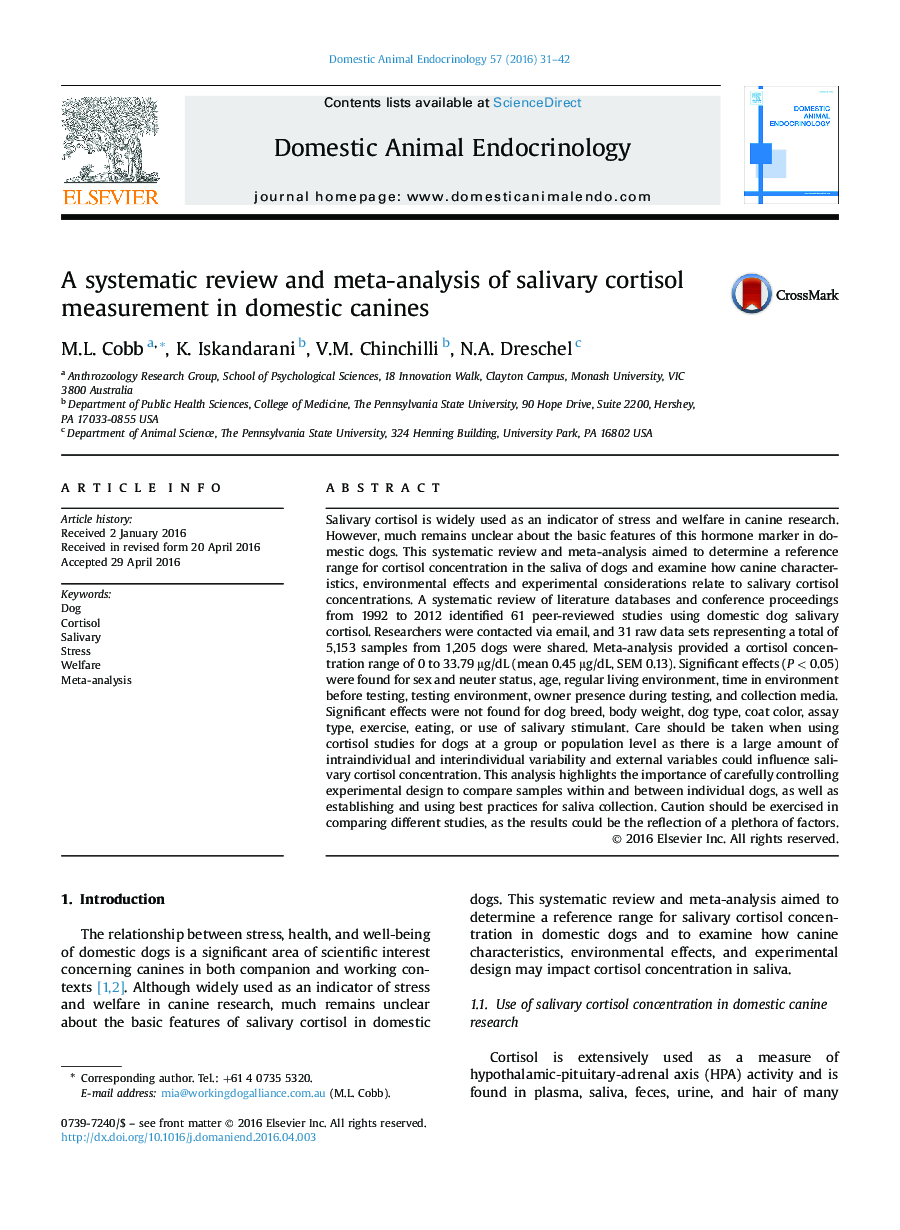| Article ID | Journal | Published Year | Pages | File Type |
|---|---|---|---|---|
| 2393406 | Domestic Animal Endocrinology | 2016 | 12 Pages |
•Systematic review and meta-analysis determined reference range for salivary cortisol in dogs.•There is a large amount of intraindividual and interindividual variability.•Salivary cortisol concentrations might relate to subject, environmental, or experimental factors.•Significant implications for interpretation of existing studies, and future research design.
Salivary cortisol is widely used as an indicator of stress and welfare in canine research. However, much remains unclear about the basic features of this hormone marker in domestic dogs. This systematic review and meta-analysis aimed to determine a reference range for cortisol concentration in the saliva of dogs and examine how canine characteristics, environmental effects and experimental considerations relate to salivary cortisol concentrations. A systematic review of literature databases and conference proceedings from 1992 to 2012 identified 61 peer-reviewed studies using domestic dog salivary cortisol. Researchers were contacted via email, and 31 raw data sets representing a total of 5,153 samples from 1,205 dogs were shared. Meta-analysis provided a cortisol concentration range of 0 to 33.79 μg/dL (mean 0.45 μg/dL, SEM 0.13). Significant effects (P < 0.05) were found for sex and neuter status, age, regular living environment, time in environment before testing, testing environment, owner presence during testing, and collection media. Significant effects were not found for dog breed, body weight, dog type, coat color, assay type, exercise, eating, or use of salivary stimulant. Care should be taken when using cortisol studies for dogs at a group or population level as there is a large amount of intraindividual and interindividual variability and external variables could influence salivary cortisol concentration. This analysis highlights the importance of carefully controlling experimental design to compare samples within and between individual dogs, as well as establishing and using best practices for saliva collection. Caution should be exercised in comparing different studies, as the results could be the reflection of a plethora of factors.
